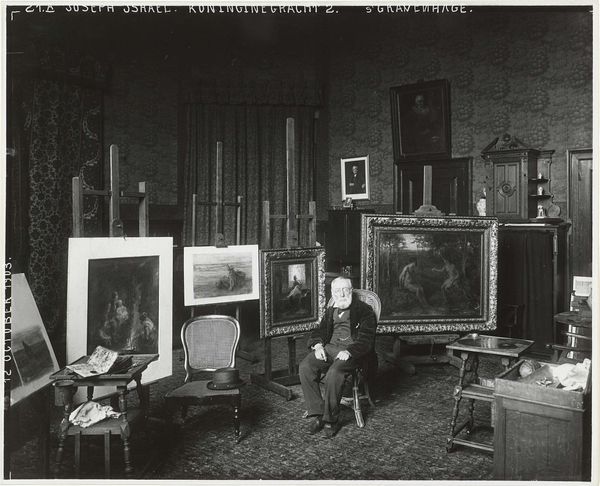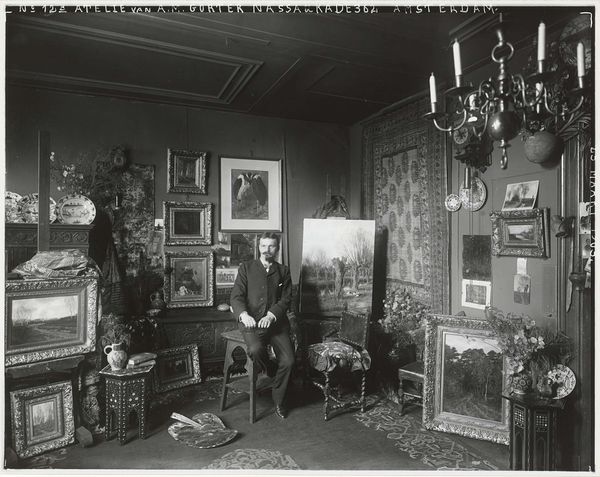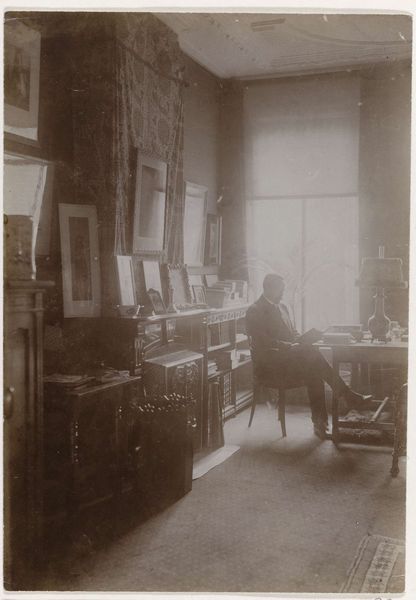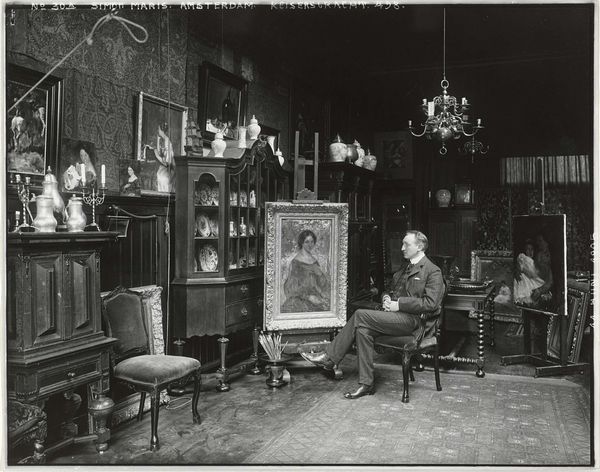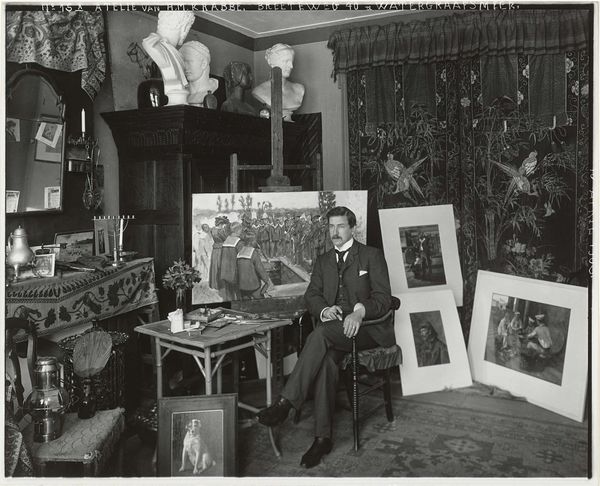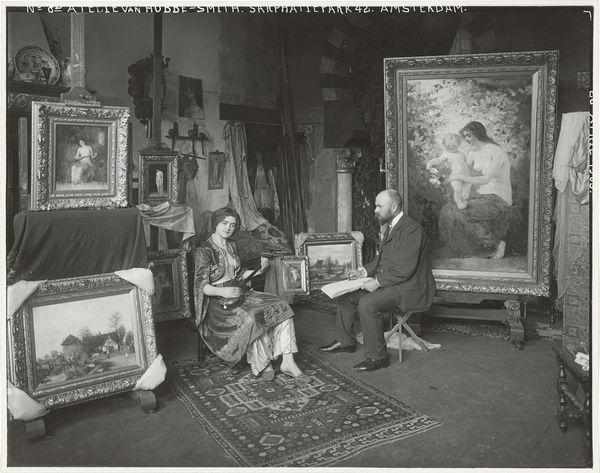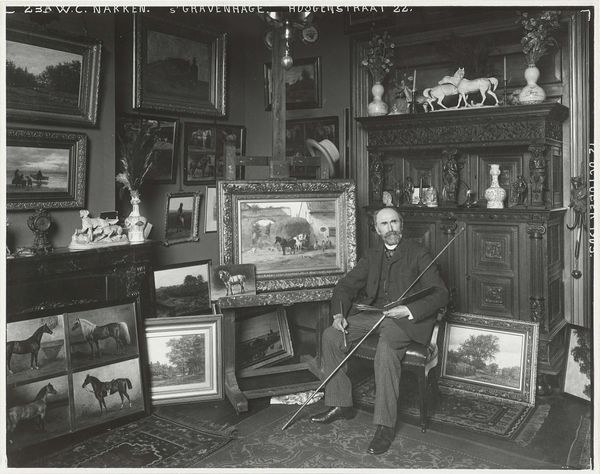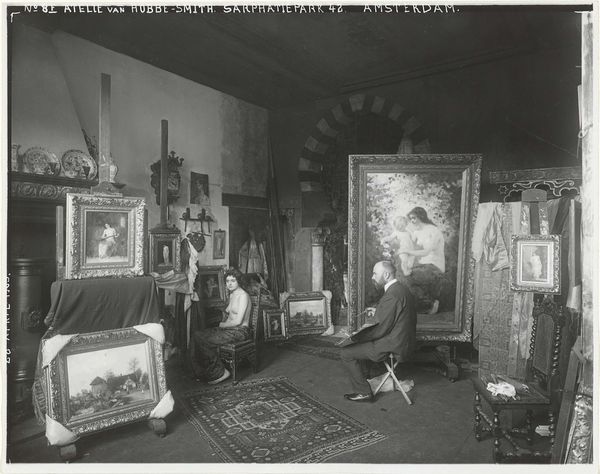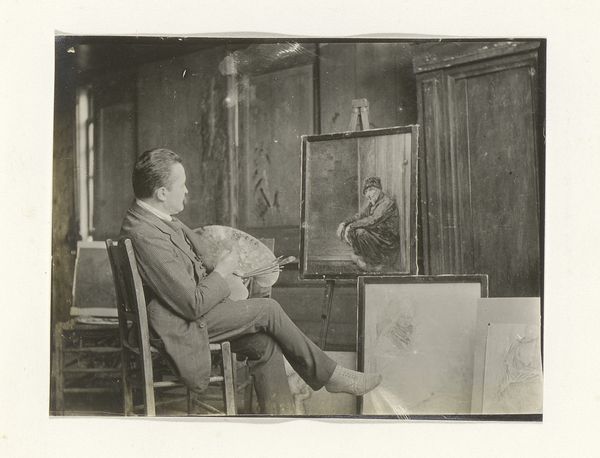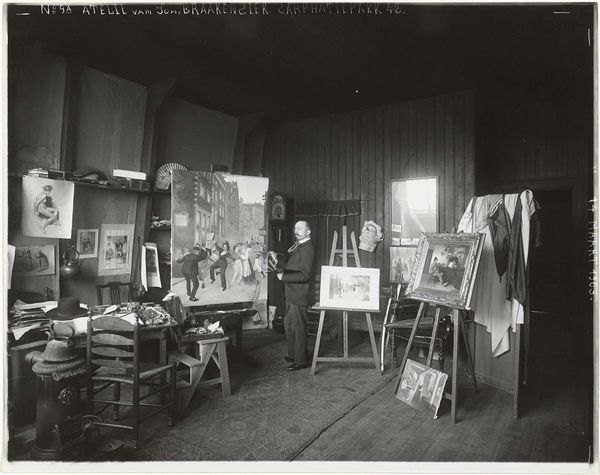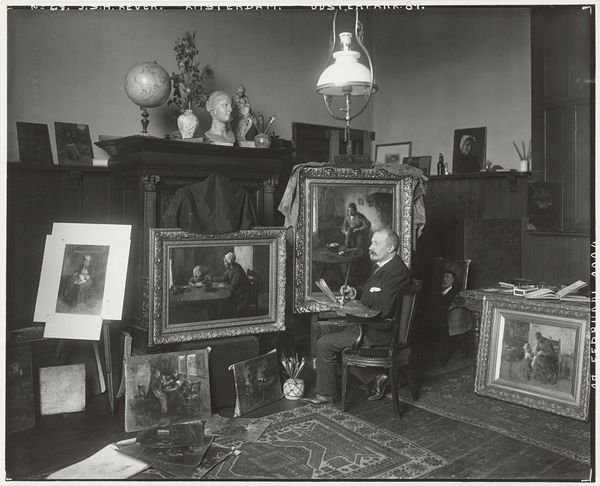
Dimensions: height 276 mm, width 325 mm
Copyright: Rijks Museum: Open Domain
Editor: This is "Portrait of Jozef Israëls in his Studio" by Sigmund Löw, a photograph taken after 1904. It's a fascinating look into an artist's workspace. I’m struck by how much art surrounds him. What jumps out at you when you see it? Curator: It's a carefully constructed image, isn't it? Consider the late 19th and early 20th centuries—photography gained traction not only as a means to document but to assert status and influence. Placing Israëls within the cluttered but also curated space, surrounded by his works, speaks to his established position in the art world. He’s framed, quite literally, by his accomplishments. Why do you think Löw chose this perspective, this setting? Editor: To show Israëls’ creative genius? It seems to glorify the artistic process… almost like a stage. Curator: Precisely. This photo functions less as a simple portrait and more as a piece of visual rhetoric. Notice how Israëls is posed, palette in hand, amidst the fruits of his labor. Löw, consciously or unconsciously, participates in constructing a narrative about artistic identity. This era was obsessed with the figure of the artist as a kind of tortured genius. Editor: So it’s less about accurately portraying him and more about building up this image of an artist in the public's imagination? Curator: Absolutely! Consider the cultural function of portraits during this period. Who was being portrayed? Whose stories were deemed worthy of preservation and celebration? Löw’s work immortalizes not just a person but a carefully crafted ideal. Editor: I never thought of it as constructing an image, rather than capturing reality. Curator: The beauty lies in recognizing how these historical images were, and continue to be, powerful tools in shaping our perceptions and beliefs.
Comments
No comments
Be the first to comment and join the conversation on the ultimate creative platform.
